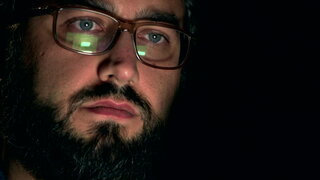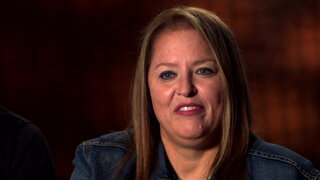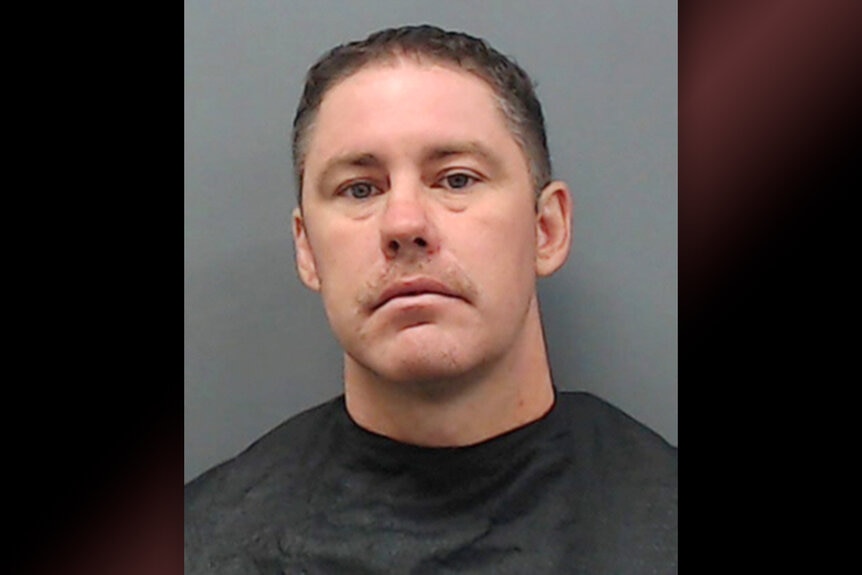Create a free profile to get unlimited access to exclusive videos, breaking news, sweepstakes, and more!
‘Lavender Doe,’ A Woman Found Burning In Texas Woods, Identified After More Than A Decade By Volunteers
It took more than a decade for Dana Lynn Dodd to regain her name after she was killed on Oct. 29, 2006.
“Lavender Doe’s” body was still burning when she was discovered in the Texas woods by two men out shooting target practice.
“She had wood piled beneath her and wood piled on top of her, and there was, I believe, a gas can lid there, so it looked like somebody was trying to cover their tracks,” Lt. Eddie Hope told “Dateline: Secrets Uncovered,” airing Wednesdays at 8/7c on Oxygen, of the grisly discovery.
Investigators could determine that the victim had been a young woman in her late teens or early 20s, but that was about all investigators had to go on.
For more than a decade, the slain woman’s identity would remain a secret — even after her killer was arrested — but Dana Lynn Dodd would finally be given back her name in February 2019 thanks to the help of three volunteers with the DNA Doe Project, a non-profit organization established to help identify unknown crime victims through the use of genetic genealogy.
“I was pretty excited,” Hope said. “The whole department was pretty excited.”
RELATED: What Happened To A Utah College Student Who Mysteriously Vanished From An Airport?
Dodd, who for years was known online simply by the moniker “Lavender Doe” in a nod to the lavender shirt she had been wearing when she died, was discovered dead in the woods in Kilgore, Texas on Oct. 29, 2006.
It was obviously a homicide, but investigators had little information to help them identify the victim, who was small in stature and still had a few baby teeth in her mouth.
“We didn’t have a clue,” Hope said. “We had no grounds to go on of who this could be or where she came from.”
Investigators entered her DNA into available databases but got no hits, and after chasing down several fruitless leads, Hope said the case soon went cold.
More than a decade would pass with no answers until a group of amateur online sleuths took on the case and became determined to identify Lavender Doe.
The case first came to the attention of Kevin Lord, a former software developer and t-shirt salesman from Killeen, Texas, who spent his free time online trying to match missing persons cases with unidentified victims.
He stumbled upon the Lavender Doe case while looking into other Texas missing persons cases and reached out to Hope.
“I was impressed that people care because we live in a world where everything is fast-paced and a lot of people are worried about themselves and not others,” Hope said.
Before long, the unconventional pair began working together.
“We just flew together, you know, whatever he needed that he couldn’t get that I could get, law enforcement-wise, he would send it to me,” Hope said.
In return, Lord could offer high-level computer skills that were not as easily accessible to the sheriff’s department. But even with his computer prowess, Lord knew that he’d likely need help to solve Lavender Doe’s identity and decided to join the DNA Doe Project, where he connected with other volunteers Lori Gaff and Missy Koski.
The DNA Doe Project uses DNA from crime victims to create DNA profiles, which are then uploaded to public ancestry websites. Volunteers work to find distant relatives of the victim, which they can then use to work backward to build out a family tree.
For Lavender Doe’s case, the non-profit raised the funding to pay for the DNA testing, but as the amateur detectives set out to dive into the case, investigators got an unexpected break in summer 2018.
Another woman, Felisha Pearson, disappeared after she was last seen with her ex-con boyfriend Joseph Wayne Burnette. Pearson’s body was later discovered in a wooded area that Burnette had been known to take the victim to in the past.
Burnette already had a known connection to the Lavender Doe case, too: His semen had been found inside the victim. At the time of the murder, Burnette had been questioned but was never arrested. He admitted to having sex with a woman that day, whose name he didn’t know, but told investigators he had an alibi for the time of the murder.
After Pearson’s body was discovered more than a decade later, Burnette admitted to killing his girlfriend and also confessed to the murder of Lavender Doe.
“He talked about this 12-year-old murder like it had happened yesterday,” Hope said. “He left no detail out.”
Burnette told investigators that he had met the young woman at a Walmart where she had been selling magazines and didn’t know her name, although he thought it might have been “Ashley.”
Now, they had a confession, but they still didn’t have the victim’s identity.
“That made it a lot more real and put more weight behind what we were doing,” Lord said of the group’s work to identify Dodd.
After receiving Lavender Doe’s DNA profile in October 2018, the team got to work and soon found a distant relative of the victim, who they believed was likely a cousin. Using that information, they were able to painstakingly create a family tree that led them to Dodd.
“I wasn’t prepared for the emotion that I had right then,” Koski said. “I couldn’t control myself. I remember sitting on the couch and just crying because I was so happy but the emotion of all this work, all these countless nights, you know, working all day and all night and trying to figure this out just all came together right then.”
For Dodd’s family, the discovery led to the end of a decades-long mystery.
“It felt like somebody just punched me in the stomach,” her half-sister Amanda Gadd told "Dateline" correspondent Keith Morrison of learning her sister’s tragic fate. “I was angry that she was by herself. You know, her worst fear came true. She was forgotten.”
Dodd had a difficult life. Her mother had moved out when she was little and she struggled to find a place to belong. For a time, she had lived with Gadd in her early teens but the relationship hit a rough patch when Dodd got a serious boyfriend at the age of 16.
Her half-brother John Dodd also took her in, but again, the boyfriend created trouble.
On her own once again, Dodd decided to get a job with a magazine company that traveled across the country selling subscriptions. While John tried to dissuade her and encouraged her to stay in Florida with him, Dodd was 18 years old and wanted to strike out on her own.
Even during their last phone call in the summer of 2006, John had tried to encourage his sister to “come home,” but she refused.
According to Hope, the magazine sales world likely introduced the teenager to seedy motels and a “dark world.”
“It’s just a form of human trafficking,” he said.
Dodd had been trying to sell magazine subscriptions in Texas the last day of her life, when she met Burnette.
For more than a decade, her identity would be lost until investigators and a trio of devoted volunteers set out to give her back her name.
“Even with her difficult life and her upbringing, she still had a good heart,” Gadd said.
Burnette pleaded guilty to the murders of Pearson and Dodd and was sentenced to 50 years for each death.



































